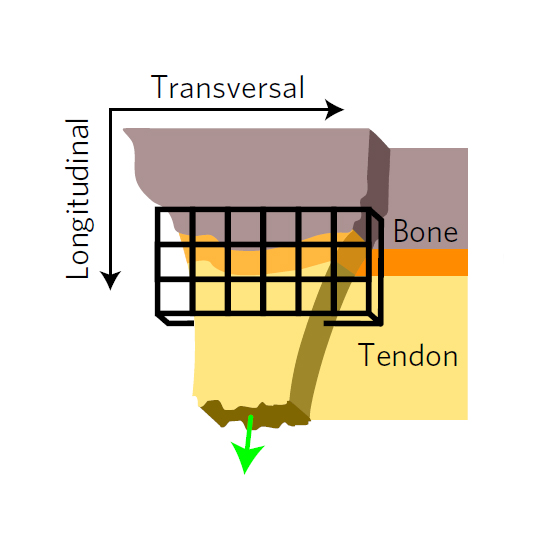The microstructure and micromechanics of the tendon–bone insertion
27-Feb-2017
Nature Materials, volume 16, pages 664–670 (2017), doi:10.1038/nmat4863
Nature Materials, online article
The exceptional mechanical properties of the load-bearing connection of tendon to bone rely on an intricate interplay of its biomolecular composition, microstructure and micromechanics. Here we identify that the Achilles tendon–bone insertion is characterized by an interface region of ∼500 μm with a distinct fibre organization and biomolecular composition. Within this region, we identify a heterogeneous mechanical response by micromechanical testing coupled with multiscale confocal microscopy. This leads to localized strains that can be larger than the remotely applied strain. The subset of fibres that sustain the majority of loading in the interface area changes with the angle of force application. Proteomic analysis detects enrichment of 22 proteins in the interfacial region that are predominantly involved in cartilage and skeletal development as well as proteoglycan metabolism. The presented mechanisms mark a guideline for further biomimetic strategies to rationally design hard–soft interfaces.











